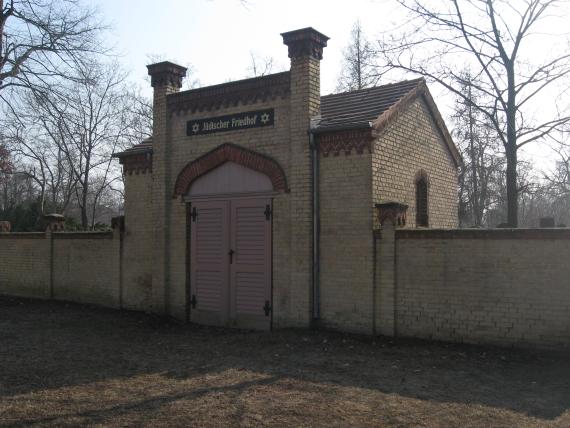Kremmener Str.
16515 Oranienburg
Germany
Evolution:
On Jan. 13, 1718, Joseph Meyer applied for a Jewish cemetery in Oranienburg, which was rejected because there were only two Jewish families in Oranienburg and they could be buried in Briesethal and Berlin. The Jewish population increased and Frederick William III issued an edict in 1812 making Jews citizens (not full equality). In the same year another application for the cemetery was successful. On 16.03.1815 the first burial took place of Jakob David Wolff, who died of convulsions at the age of 20 months. The foundation was considered to be a board fence for the boundary and a shed for the mortuary. In 1875 a mortuary and a hedge were added, and in 1933 a cemetery wall in the Oriental style.
General:
Judaism has great respect for the human corpse and for burial places, therefore the cemetery is also considered a permanent institution. From this follows an inviolable rest for the dead, which is why the graves are eternal. The Jews call their cemetery the "Good Place" and it stands above the synagogue. It is a sin not to bury the dead and it is considered a disgrace not to be buried. In Judaism, there are only earth burials with plain tombstones and no flower decorations because in death all are equal. The feet of the dead in the cemetery face south (sea route via Mediterranean Sea to Jerusalem). Stones are often placed on the grave because they represent eternity. In the cemetery, men must wear a kippah (head covering). It is closed on Sabbath and other Jewish holidays.
Today the cemetery is used by the local Jewish community. There are a total of 116 recorded gravesites and the buildings dating from the 19th century are also well preserved. However, it is a pity that one can still clearly see the destruction from the Nazi era and later damage. Gravestones had to be glued together again.




Add new comment